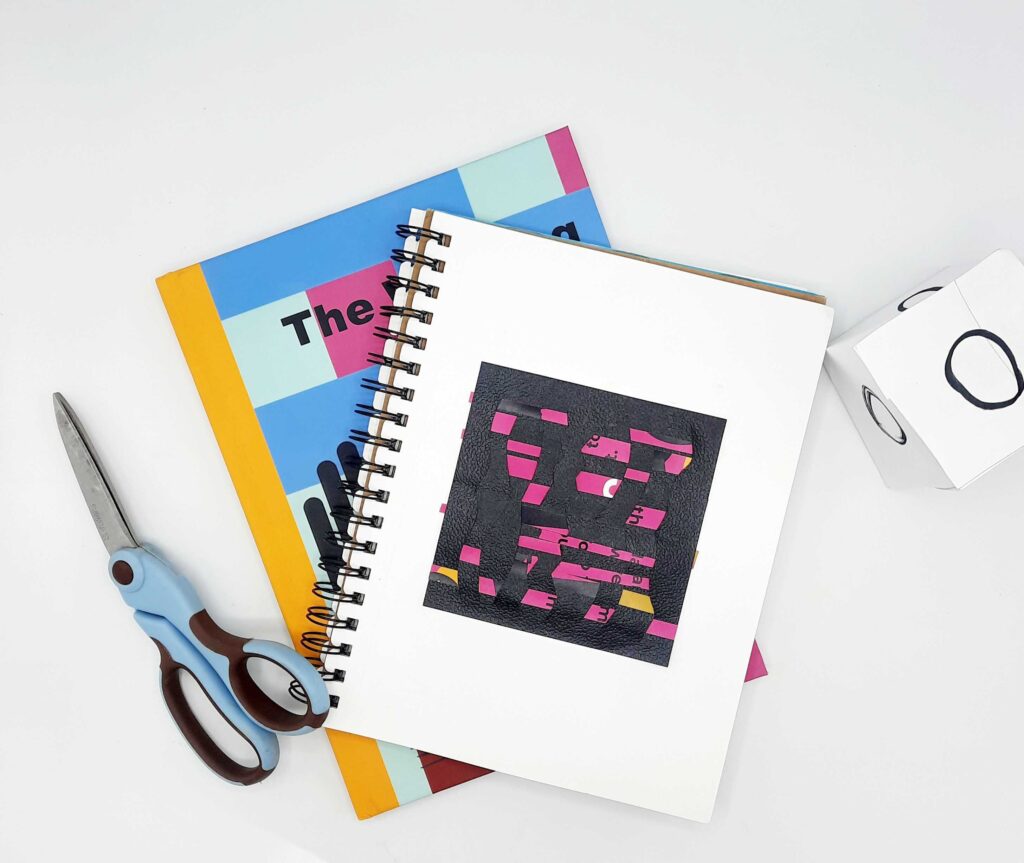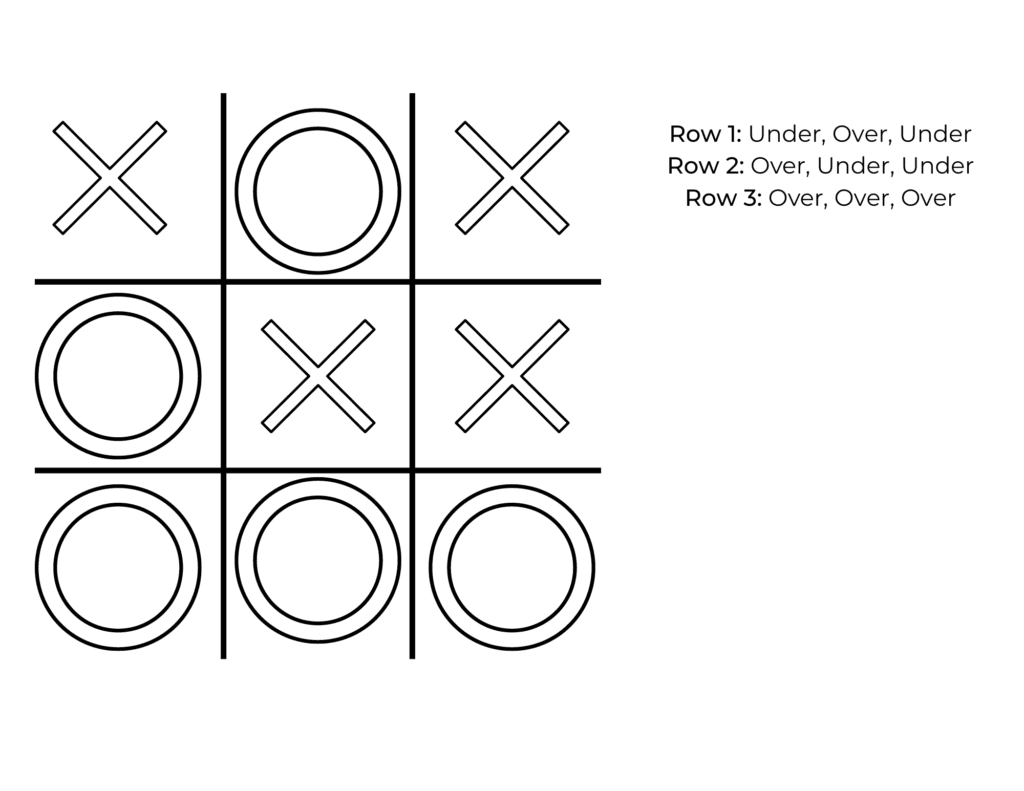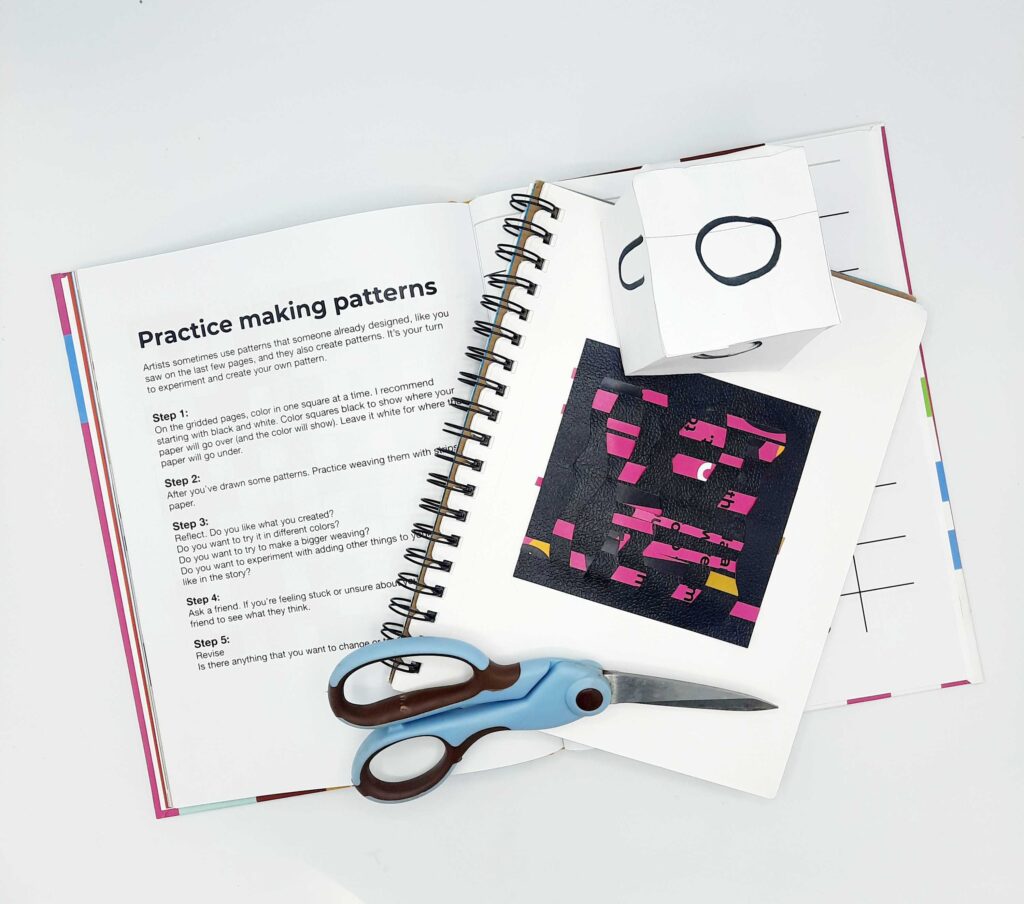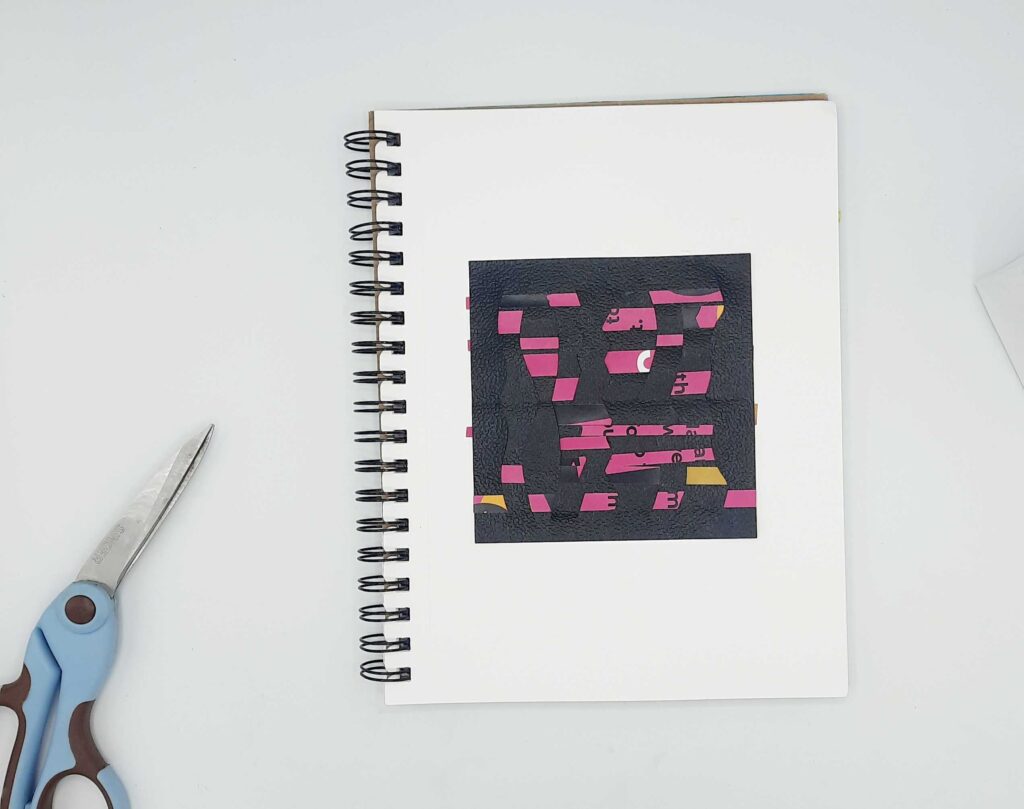How to Use Chance Encounters to Create Weaving Patterns

Have you ever heard of the Dada art movement? The movement began in Europe in response to the brutality of World War I. Writers, actors, artists, and other creative thinkers adopted the philosophy of the Dada movement as they experimented and explored new ways of making art and defining what was considered art.
Surrealists Artists like Jean (Hans) Arp and Marcel Duchamp embraced the Dada Movement and explored techniques that would better connect them with the dream world. Surrealists developed games to create chance encounters, which led to processes like collage and photomontage, intending to move away from rational thought and get a break from the weight of life post-World War I.
How to use chance to develop weaving patterns
Tic Tac Toe
For younger students or those new to paper weaving, start by having them play a tic-tac-toe game. X= under, and O= Over. Play the game a few times and observe the various patterns you create.
As students create patterns by chance, it’s a good time to talk about weaving structure. You’ll find that if someone wins the tic-tac-toe game… ie: 3 in a row, that will cause a floating strip. Students will either need to make a slight adjustment to their pattern or explore how to secure the ends of their strips.
To create a more complex pattern, have students play tic-tac-toe, but try to get 5 in a row or 10 in a row.

Role a Cube
Use the grid pages in The Weaving Book, or create your own. Next, create a paper cube, labeling each side with O for over or U for under. Fill in the grided paper as the cube is rolled, drafting the weaving pattern.
If you’re working on a large piece or want to speed up the process, explore labeling your cube with things like Over 2 and Under 3 to draft your pattern quickly.

Use Dice
Like the game above, you’ll want to start using the provided grid in The Weaving Book, drawing your grid paper, or using graph paper. For the first roll of the die, mark on your paper how many times you need to go over, roll again, and mark how many times you should go under. Continue this process until your grid is completed; now you’re ready to weave.
